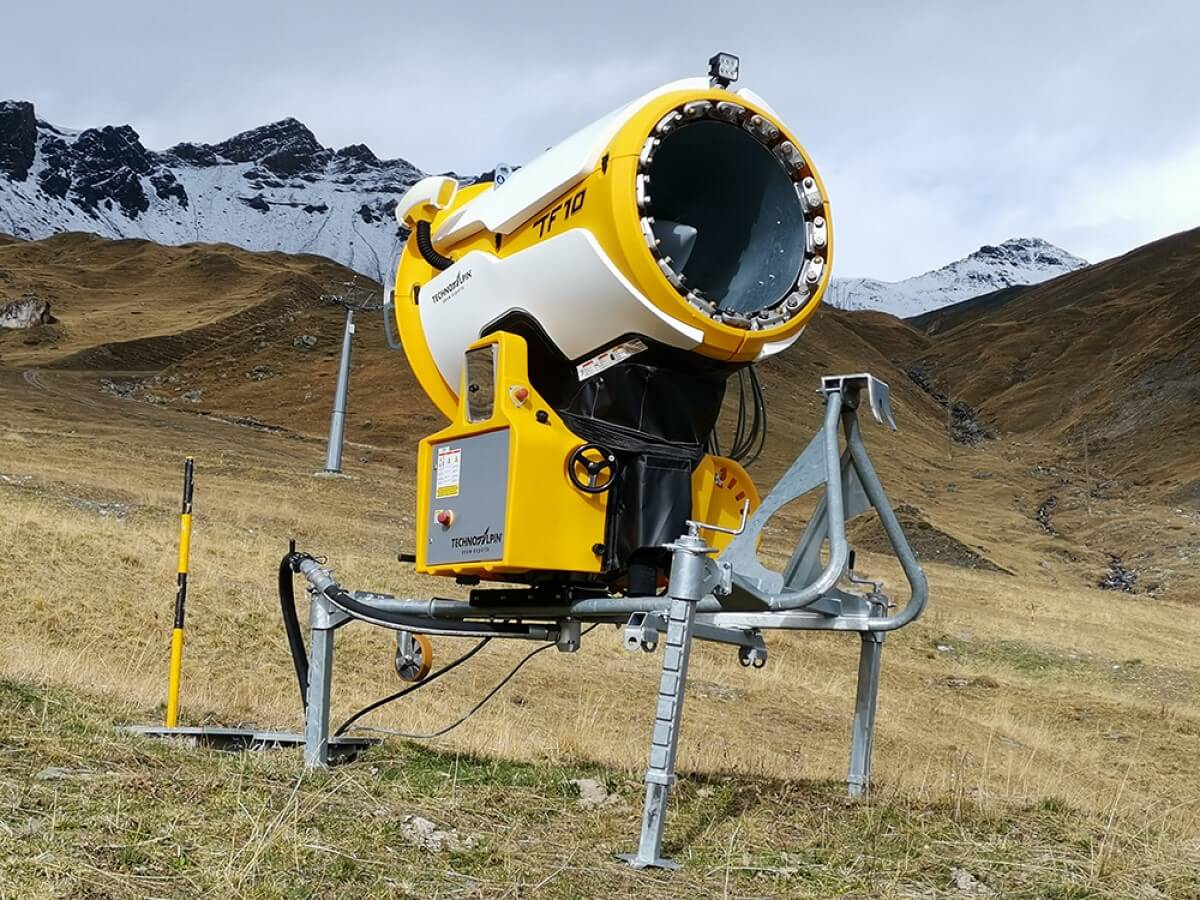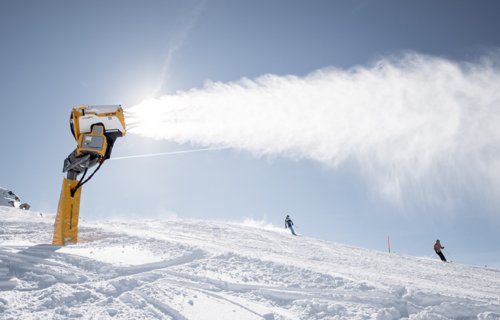BASEL, Switzerland — A white Christmas could soon become a thing of the past, especially for skiers. A new study finds climate change is making things extremely hard for even the biggest ski resorts in the world to keep the slopes white for tourists.
Researchers from the University of Basel say even with the help of technical snowmaking machines, the forecast for December ski vacations looks bleak by the year 2100. Looking at the Andermatt-Sedrun-Disentis ski resort in Switzerland, the team examined how reliable the attraction will remain throughout the century, as well as how much water snowmakers will need to make up for warmer winters.
Although climate models predict that there will actually be more precipitation during winter in the coming decades, researchers say it’ll fall as rain and not snow because of rising temperatures. Dr. Erika Hiltbrunner’s team calculated what it will take to make sure this large ski resort is able to keep the doors open during the Christmas holidays and maintain a ski season which lasts at least 100 days — both with and without artificial snowmaking.
They collected data on the aspects of this resort’s slopes, where and when snow is produced, and how much water in necessary to create artificial snow. Finally, researchers combined this data with the latest climate change scenarios and the SkiSim 2.0 simulation, which gives projections of snow conditions with and without technical snowmaking.
READ: Best U.S. Ski Resorts In 2023: Top 5 Winter Vacation Spots According To Travel Experts

Ski resorts can no longer guarantee a white Christmas
Although the results find that ski resorts like Andermatt-Sedrun-Disentis will still be able to create a 100-day ski season, business is going to become increasingly tight during December and the week of Christmas. However, it will be even harder to keep snow on the ground at ski resorts below 5,900 feet high. Simply put, smaller resorts can no longer guarantee their visitors a white Christmas ski vacation.
“Many people don’t realize that you also need certain weather conditions for snowmaking,” explains Hiltbrunner in a university release. “It must not be too warm or too humid, otherwise there will not be enough evaporation cooling for the sprayed water to freeze in the air and come down as snow.”
Study authors explain that warm air absorbs more moisture. As winters become warmer due to global warming, it gets difficult or nearly impossible to create snow using a snowmachine.
“Here, the laws of physics set clear limits for snowmaking,” the team adds.
Ski resorts are going to use up more and more water
So, what’s the cost of using snowmakers to keep skiers on the slopes in the future? The study finds it’s going to take a tremendous amount of water just to pump out the same amount of snow that machines do now.
Researchers calculate that at Andermatt-Sedrun-Disentis alone, water usage will nearly double, increasing by 80 percent in order to make up for the lack of snow falling during winter. By the end of the century, the resort’s water consumption will skyrocket to 540 million liters, compared to 300 million now.
For other resorts around the globe, that number is likely on the low side. Study authors found that ski attractions like Scuol ski resort may need up to five time as much water to stay in business.
The team notes that these figures don’t even take into account extreme weather events, such as the winter of 2017, where snow totals in the region dropped significantly.
Is a ski resort the best use for water?
As temperatures rise and technical snowmaking becomes a necessity, researchers note that this will place a major strain on water supplies worldwide. For Andermatt-Sedrun-Disentis, their water comes from the Oberalpsee, a lake in Switzerland. However, people are only allowed to withdraw 200 million liters of water annually for the purpose of snowmaking.
“The Oberalpsee is also used to produce hydroelectric power,” says the Agroscope research station’s Dr. Maria Vorkauf, lead author of the study. “Here, we are likely to see a conflict between the water demands for the ski resort and those for hydropower generation.”
The team also notes that climate change is likely going to make skiing trips too expensive for the average person. More artificial snowmaking will drive up the prices, especially as fewer resorts are able to stay in business.
“Sooner or later, people with average incomes will simply no longer be able to afford them,” says Hiltbrunner.
The study is published in the International Journal of Biometeorology.


This is absolute nonsense. Not a single disaster predicted by climate alarmists is in evidence. None. There is no climate crisis; the physics says so.